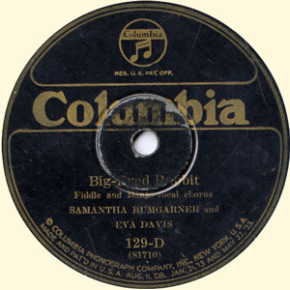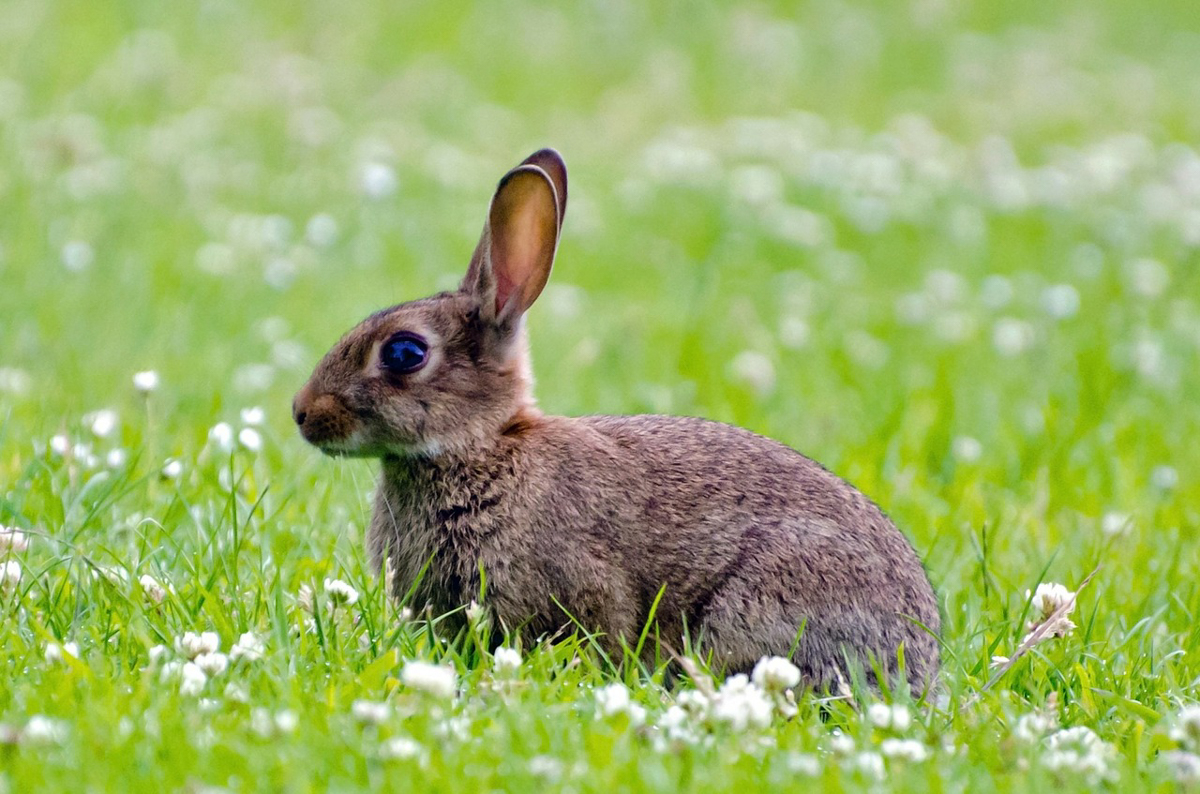All kinds of animals pop up in old-time songs. I got a mule to ride, my horses ain’t hungry they won’t eat your hay, cluck old hen, Indian ate a woodchuck, as well as pigs, possums and polecats – the list is endless. But my favorite will always be the big-eyed rabbit – appropriate for a post on the Easter weekend! It’s not the best-known old-time song out there, but it is one that is quite popular in southwest Virginia and northwest North Carolina.

Rabbits are well represented in the old-time canon. Talking about rabbit songs with Trish Fore, a fellow BCM blogger and banjo player for The Cabin Creek Boys, she also threw out “Ol’ Captain Rabbit,” “Run Little Rabbit Run,” “Buck Eyed Rabbit” (recorded by the Hillbillies), and an old favorite I had forgotten, “Old Molly Hare.” Her husband Kevin, also a banjo player as well as a luthier, added “Little Rabbit Where’s Your Mammy?,” recorded by Crockett’s Kentucky Mountaineers. Another perennial favorite is “Rabbit Up a Gum Stump” (though sometimes it’s a possum up a gum stump), a favorite of such southwest Virginia legends as Albert Hash and Thornton Spencer.
Yonder comes a rabbit,
Fast as he can run,
Yonder comes another one,
Shoot him with a double-barrel gun, lord,
Shoot him with a double-barrel gun.
Figuring out the background and recording history of most old-time songs can get hazy, and my research first led me to a version of “Big-Eyed Rabbit” that seems to have been recorded in May 1939. That recording, done in Quitman, Mississippi, is in the Library of Congress and the credits are as follows: Sung by Charles L. Long with fiddle, with Sam Neal beating straws. I thought this version was the first recording of the song, but then found mention of Samantha Bumgarner recording 10 songs (often with Eva Davis) for Columbia Records in April 1924, one of which was “Big-Eyed Rabbit.”

Whatever the origin, the song found enduring popularity in the Round Peak area of North Carolina as well as north of there around Galax, Virginia. It was recorded by Tommy Jarrell, Kirk Sutphin, and Kyle Creed and Fred Cockerham at various points. Kirk learned it from Tommy, who in turn had learned it from his father, Ben Jarrell. Trish told me: “I always thought that people sang about what they knew and things they enjoyed. Rabbit hunting is sport and also provided meat and food for the family back in the day, and even for some today. I know folks who still eat rabbit.”
Different versions of the song have two or three rabbit-related verses, in one of which the rabbit ends up in a frying pan. In another verse, seemingly out of place with the others, the song’s narrator sees his darling coming, telling us “her pretty blue eyes/shining bright like gold.”
Regardless, it’s a song that has got legs. It continues to be a favorite, recorded in the last few years by Crooked Road locals like Mountain Park Old Time Band and the New Ballard’s Branch Bogtrotters, who liked it so much they included it on two consecutive albums, the second of which even included an additional verse.
It has also captivated musicians from further afield. Canadian fiddler and step dancer April Verch, from Ontario’s Ottawa Valley, recorded the song and even borrowed the line “Bright like gold” for the title of the album it appears on. Verch is no stranger to southwest Virginia, having appeared at the Wayne Henderson Guitar Festival and Competition, and at a concert I attended a few years ago in Takoma Park, Maryland, she explained that she learned “Big-Eyed Rabbit” from watching an old documentary about – who else – Tommy Jarrell. Whatever the reasons for his popularity, the big-eyed rabbit, still skipping through the sand, is clearly here to stay.
Joseph Vess lives in Meadowview, VA, where he listens to lots of old-time music and occasionally plays the guitar. He thanks Trish and Kevin Fore for their invaluable assistance with this story. For more on the lyrics and history of “Big-Eyed Rabbit,” check out this link.


